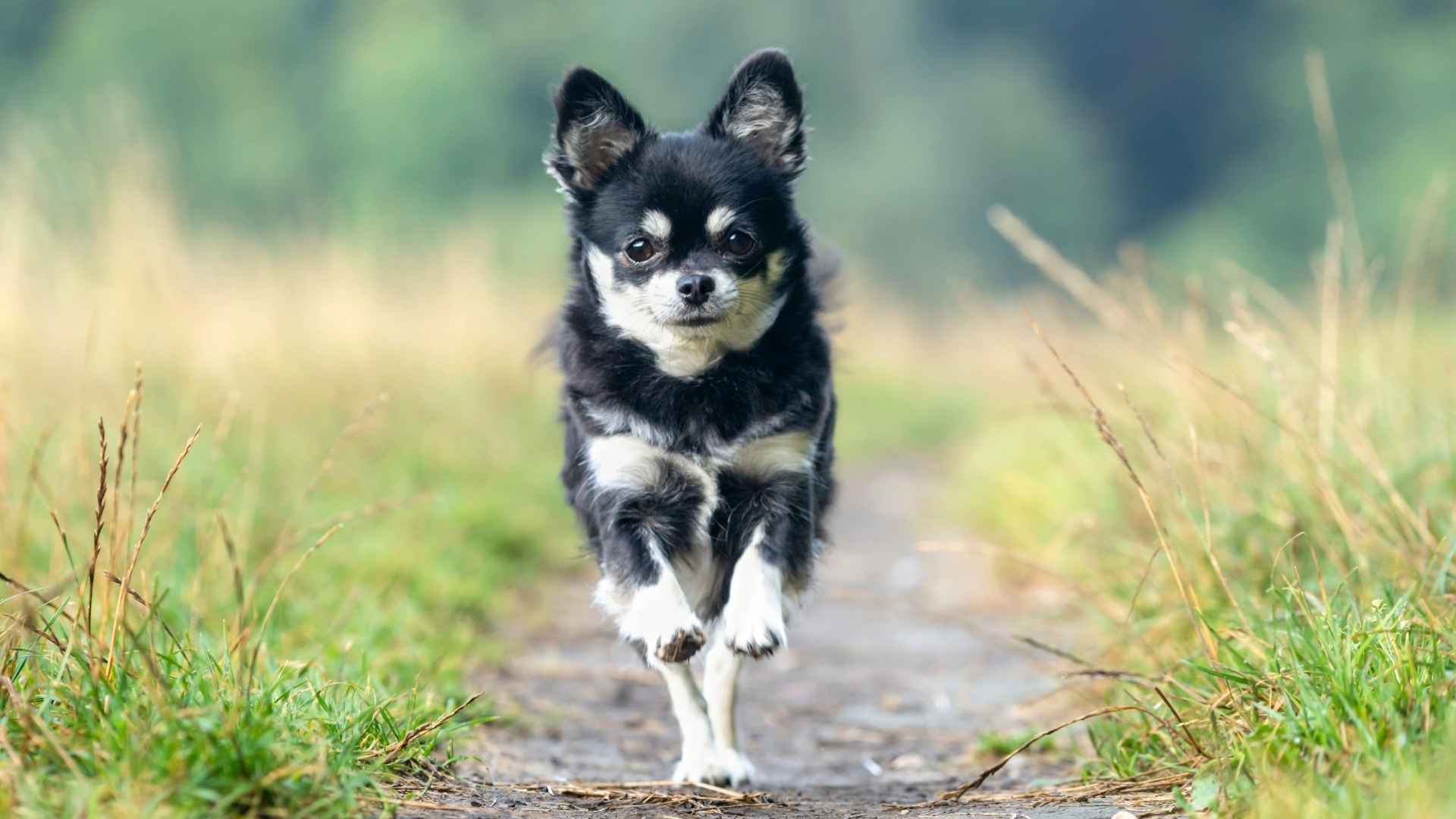You’re not alone if you are looking for a tiny pup with endless energy and a long life ahead. Tons of dog lovers dream of finding that perfect mix—small enough to fit in your lap, but active enough to keep up on life’s adventures. Bonus points if they stick around for many, many years.
But here’s the thing: not every little dog is a couch potato. Some are natural-born zoomers, packed with personality and stamina. They’re the kind that will happily chase a ball, explore a trail, or turn your living room into a racetrack—every single day.
And when these tiny dynamos also come with a reputation for long life spans? That’s where the magic happens. Imagine years of loyal companionship, playful moments, and hilarious antics… all from a dog that weighs less than your gym bag.
Ready to meet the small but mighty breeds that never seem to run out of energy—or time? Let’s dive in.
Active Tiny Dog Breeds with a Long Lifespan
1. Bichon Frise
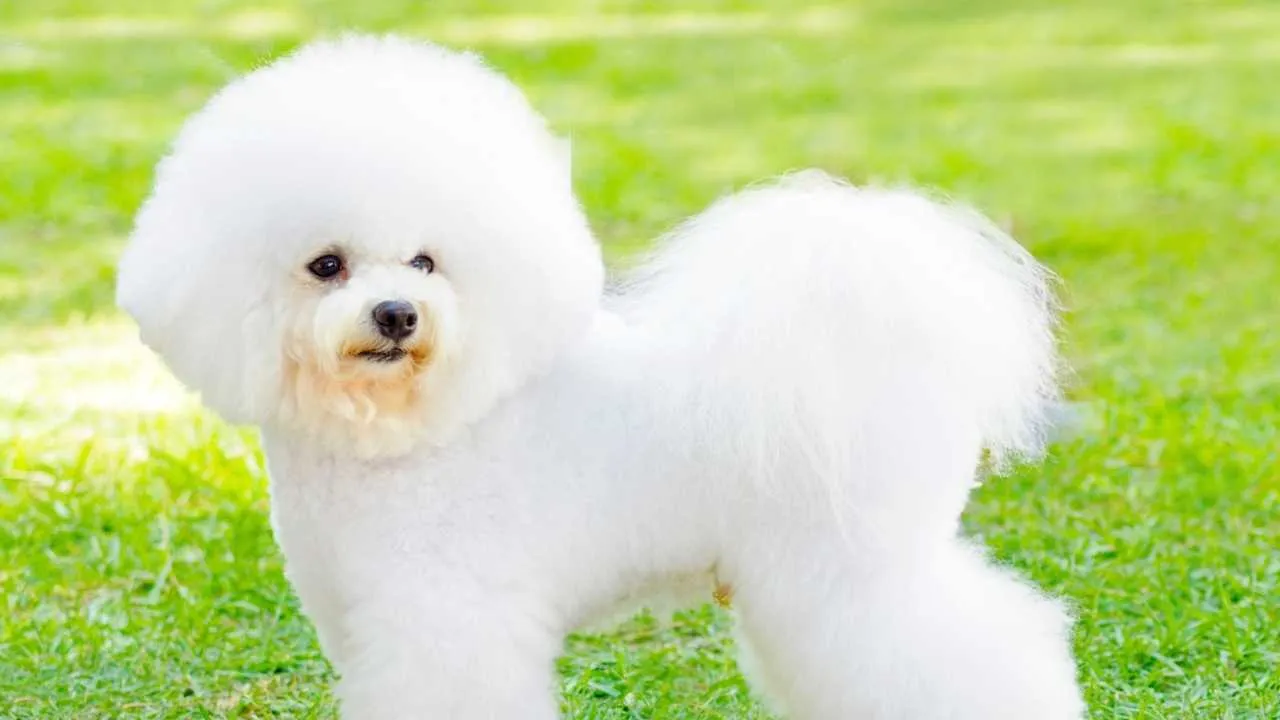
Don’t let the cloud-like fluff fool you—this little dog’s got moves. The Bichon Frise might look like a pampered lap pup, but it’s secretly a lively go-getter with energy to spare. Behind that powder-puff coat is a dog that lives for playtime and thrives on interaction.
These tiny charmers are playful, energetic, says Britannica. With their springy gait and peppy attitude, Bichons love agility games, fetch marathons, and even learning tricks. They’re happiest when they’ve got something to do—especially if it means being the center of attention. Because let’s be real, they love the spotlight.
What’s wild is how long they keep that youthful energy. Many Bichons stay bouncy well into their teens, especially when they’re mentally and physically stimulated. Yep, they’re one of those breeds that just doesn’t seem to age—like the dog world’s version of a forever-young pop star.
Worried about small dog health issues? Bichons tend to dodge a lot of the common problems that hit other tiny breeds. Their long average lifespan (around 14–16 years!) comes with relatively few genetic hiccups if they’re responsibly bred. Just keep up with grooming and vet visits, and you’re golden.
Now, about their personality—think social butterfly meets class clown. These dogs crave human company and can get a little stir-crazy without enough attention or stimulation. Boredom? That’s when mischief happens. But when they’re engaged, they’re absolute angels.
Fun fact: The Bichon Frise was once a circus performer in Europe—makes sense, right? All that flair, all that energy. So yeah, they were literally born to be entertaining.
2. Biewer Terrier
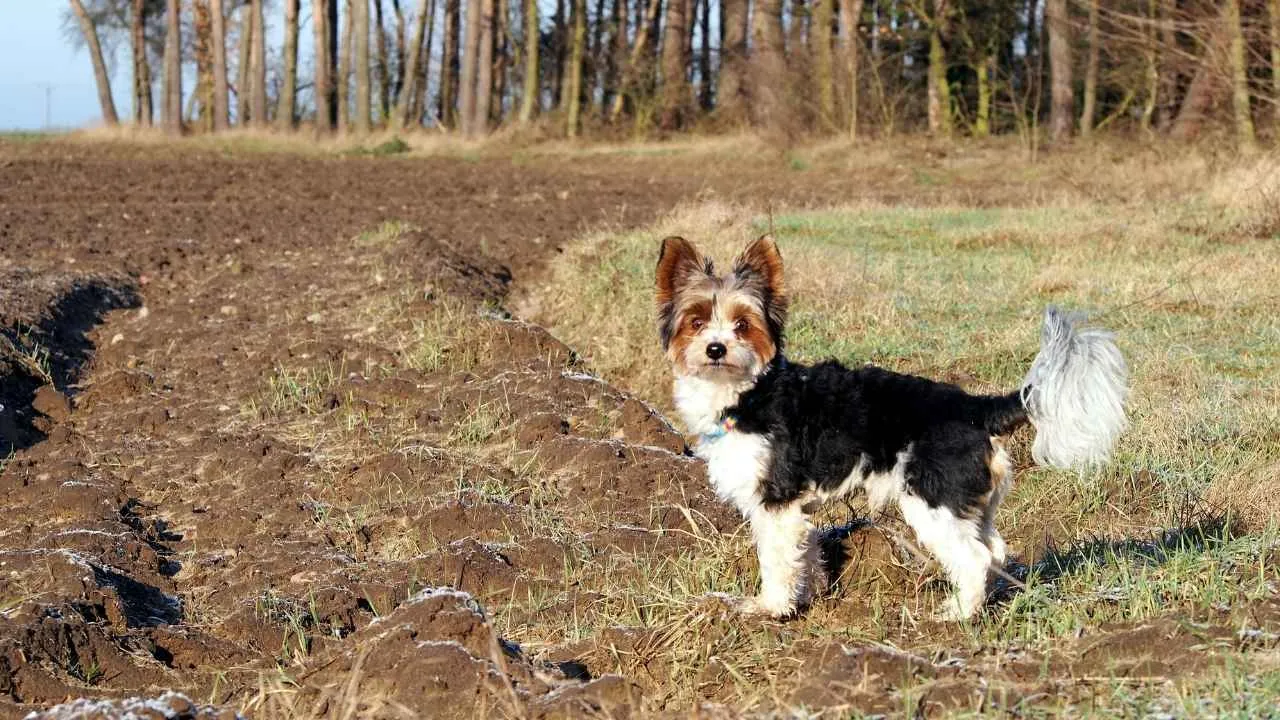
Think toy-sized diva with a motor that never stops. The Biewer Terrier (pronounced “Beaver”) might be a newcomer on the dog scene, but it’s already winning hearts with its upbeat energy and striking tricolor coat—seriously, it looks like it’s always dressed for a party.
Unlike most tiny dogs that stick to their humans like glue, the Biewer’s got a curious streak a mile wide. They love exploring, whether it’s your backyard, the neighbour’s flowerbed (oops), or that squeaky toy that rolled under the couch two days ago. These intelligent and smart dogs are not just cute—they’re clever.
Despite their fearless vibe, Biewers are surprisingly adaptable. Got a small apartment? No problem. A bigger home with a yard? Even better. As long as they’ve got room to move and something interesting to sniff, they’re good to go. And yes, daily playtime is non-negotiable.
Want to know the best part? They age like fine wine. PetMD says that Biewer Terriers can live 12 to 15 years, often staying sharp and spunky well into their senior years. It’s like they missed the memo that said tiny dogs are supposed to slow down.
Socially, they’re total charmers. Biewers tend to get along with kids, other pets, and even strangers, as long as they’ve been properly socialized. They’ve got that friendly spark that turns walks into mini meet-and-greets. Ever seen a dog make five friends in two blocks? Now you have.
Quick fact: Biewer Terriers were only recognized by the AKC in 2021, making them one of the newest breeds in the spotlight. But don’t let that fool you—they’re seasoned pros at stealing attention (and socks).
3. Brussels Griffon
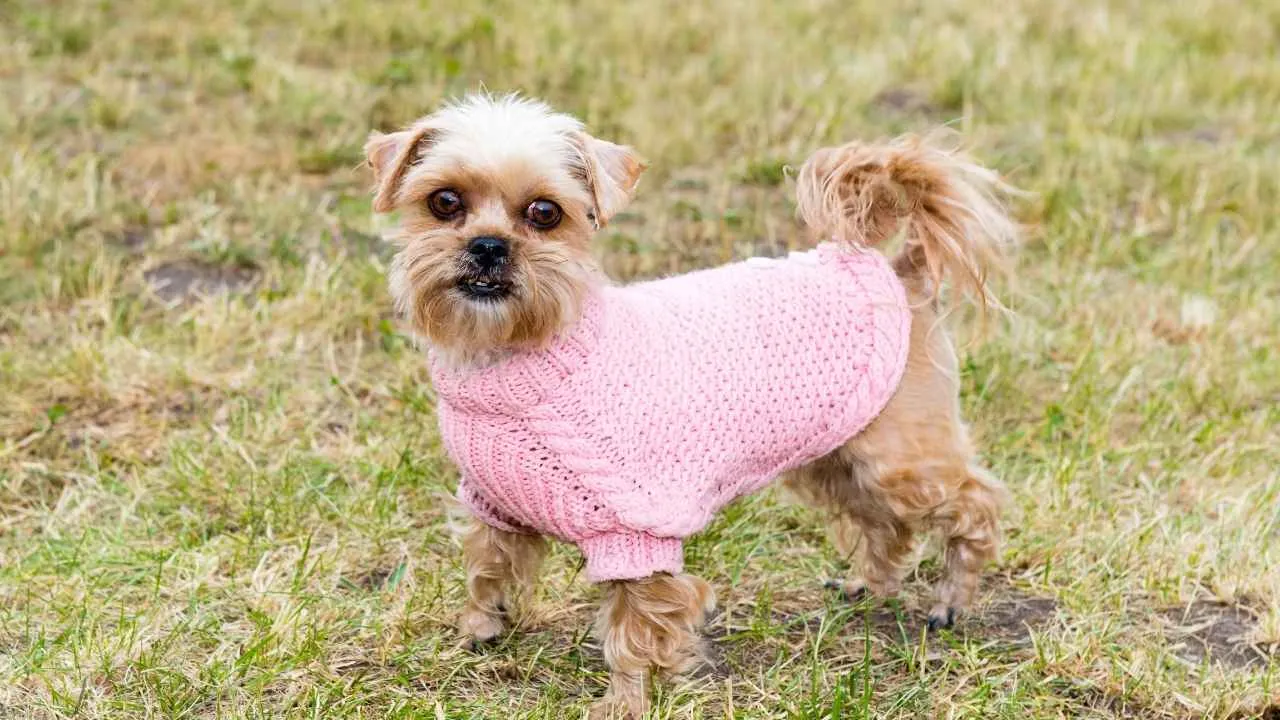
Brussels Griffon is considered a dog breed that could outsmart most humans. With a face full of expression and a personality that flips from silly to serious in seconds, this little gremlin-like pup is an energetic, attention-demanding spark plug that never stops surprising you.
Under 12 pounds but packed with personality, the Brussels Griffon isn’t just a lapdog. These guys are climbers, chasers, and shadow-hunters (yes, they’ll randomly chase shadows on the wall). They’ve got a wild mix of terrier tenacity and toy breed sensitivity, and it’s honestly a little addictive.
What keeps them going well into their later years—sometimes up to 15 years or more—is their love of movement and stimulation. They don’t just want a walk. They want an adventure. A sniffing mission. A squirrel stakeout. So if you’re looking for a lazy lap pup… You might wanna look elsewhere.
Training a Brussels Griffon is a bit like negotiating with a very smart toddler. They understand what you want, but they’re deciding whether it’s worth their time. Purina says that their intelligence makes them quick to learn once they’re motivated, especially with praise or tasty bribes.
Because of their emotional sensitivity, these dogs need a gentle touch. Harsh tones? Total backfire. But when they’re treated with respect and kept mentally stimulated, they thrive—and they stay active and engaged into old age. It’s kind of amazing how puppy-like they stay.
Fun fact: The Brussels Griffon famously starred in the movie As Good As It Gets—and totally upstaged Jack Nicholson. That’s the level of charisma we’re talking about.
4. Chihuahua
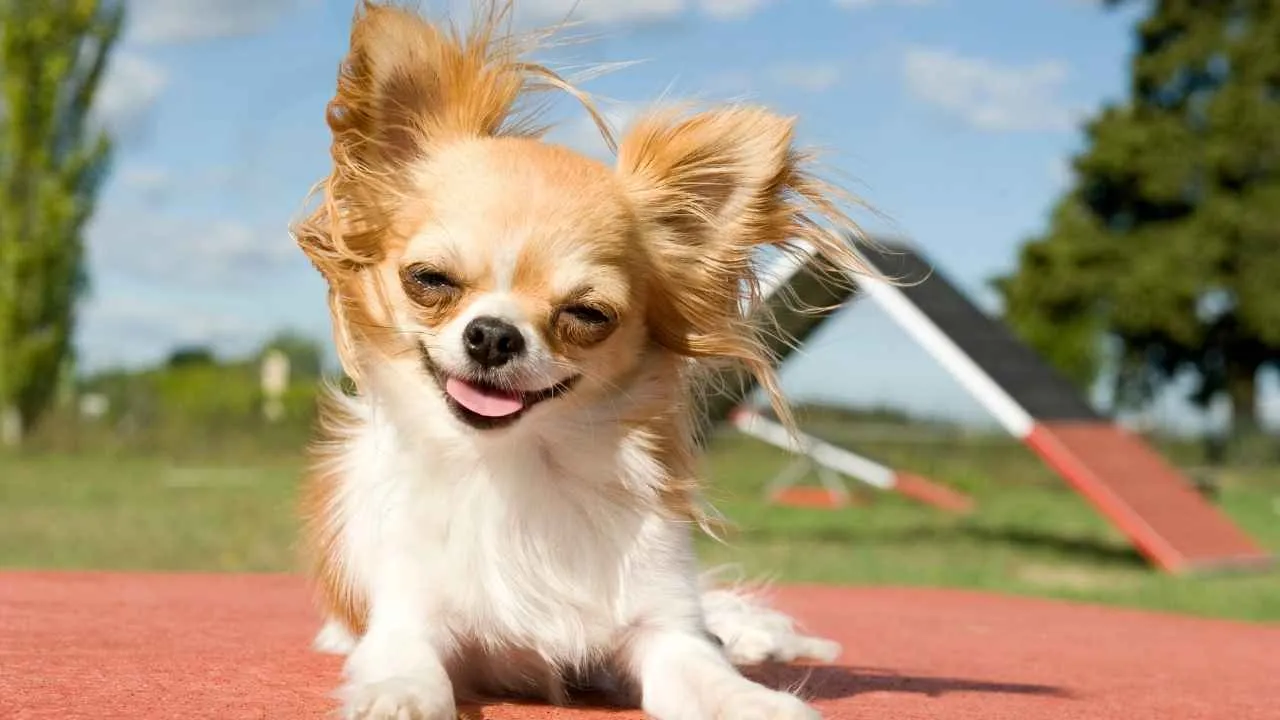
Think a 5-pound dog can’t run your house? Think again. The Chihuahua may be the smallest dog breed out there, but don’t let the size fool you—this little spitfire has the confidence of a Great Dane and the energy of a triple-shot espresso.
Chihuahuas are natural-born movers. Whether they’re zipping around the living room, bossing around dogs three times their size, or patrolling the backyard like it’s a military zone, these dogs stay active because they want to. Lying around all day? Not their vibe—unless it’s on your lap.
What makes them super fascinating is how they form intense bonds with their humans. We’re talking ride-or-die loyalty. That connection often keeps them mentally sharp and emotionally engaged well into their golden years. Which, by the way, can stretch to 18 years or more. Yep—eighteen.
So what keeps them ticking so long? Part genetics, part attitude. AKC says that Chihuahuas are feisty, alert, and not afraid to speak their minds (or bark their opinions). They’re mentally stimulated by just about everything, which helps prevent the “aging slump” you see in less active breeds.
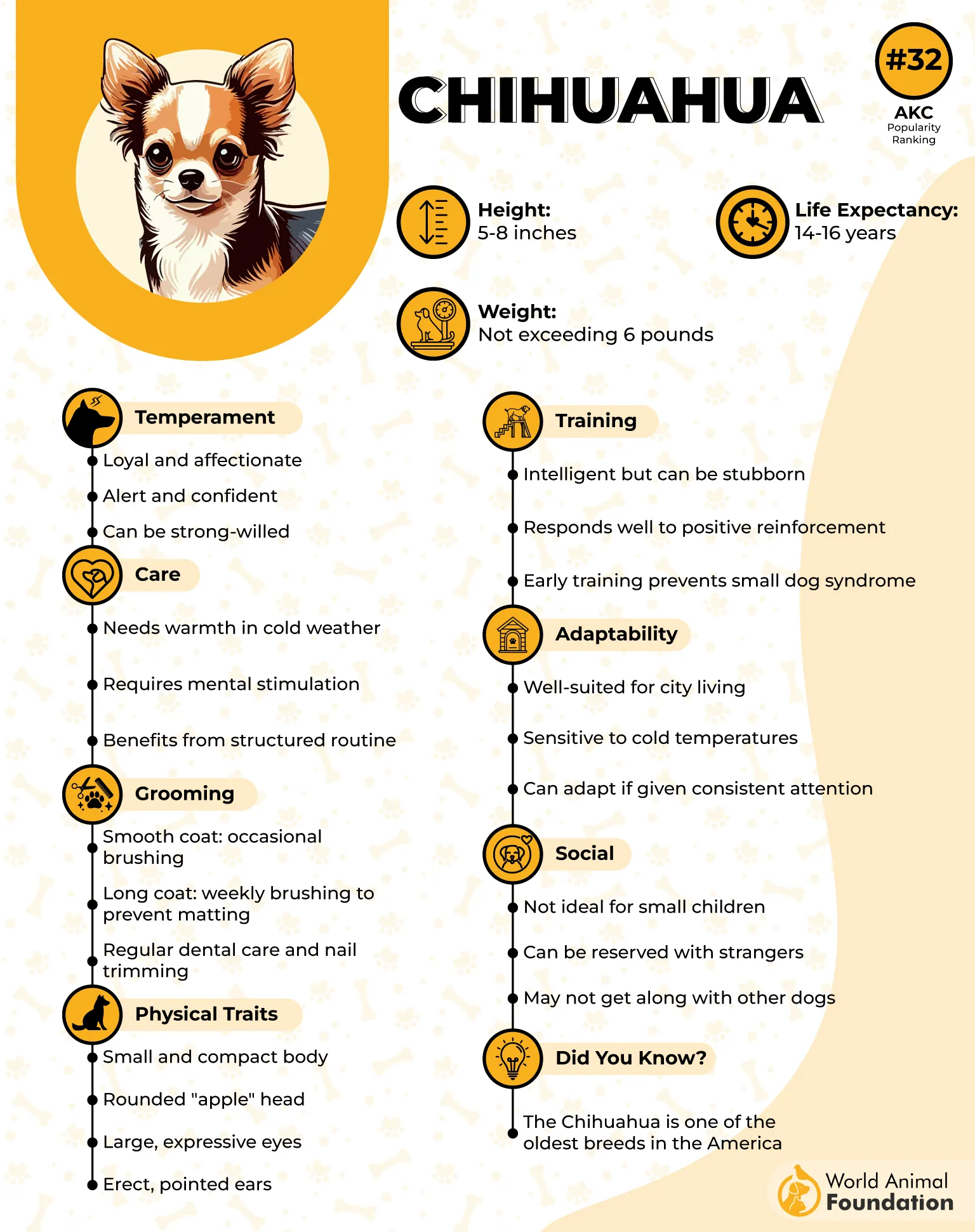
One thing you might not expect? They’re surprisingly good at dog sports—agility, rally, even scent work. As long as their legs can keep up, their brain is 100% on board. They do great in apartments, but they need structure. Without daily walks or interactive play, they can get snappy or anxious. Mental exercise is just as important, so puzzle toys, short training bursts, or even hide-and-seek can do wonders.
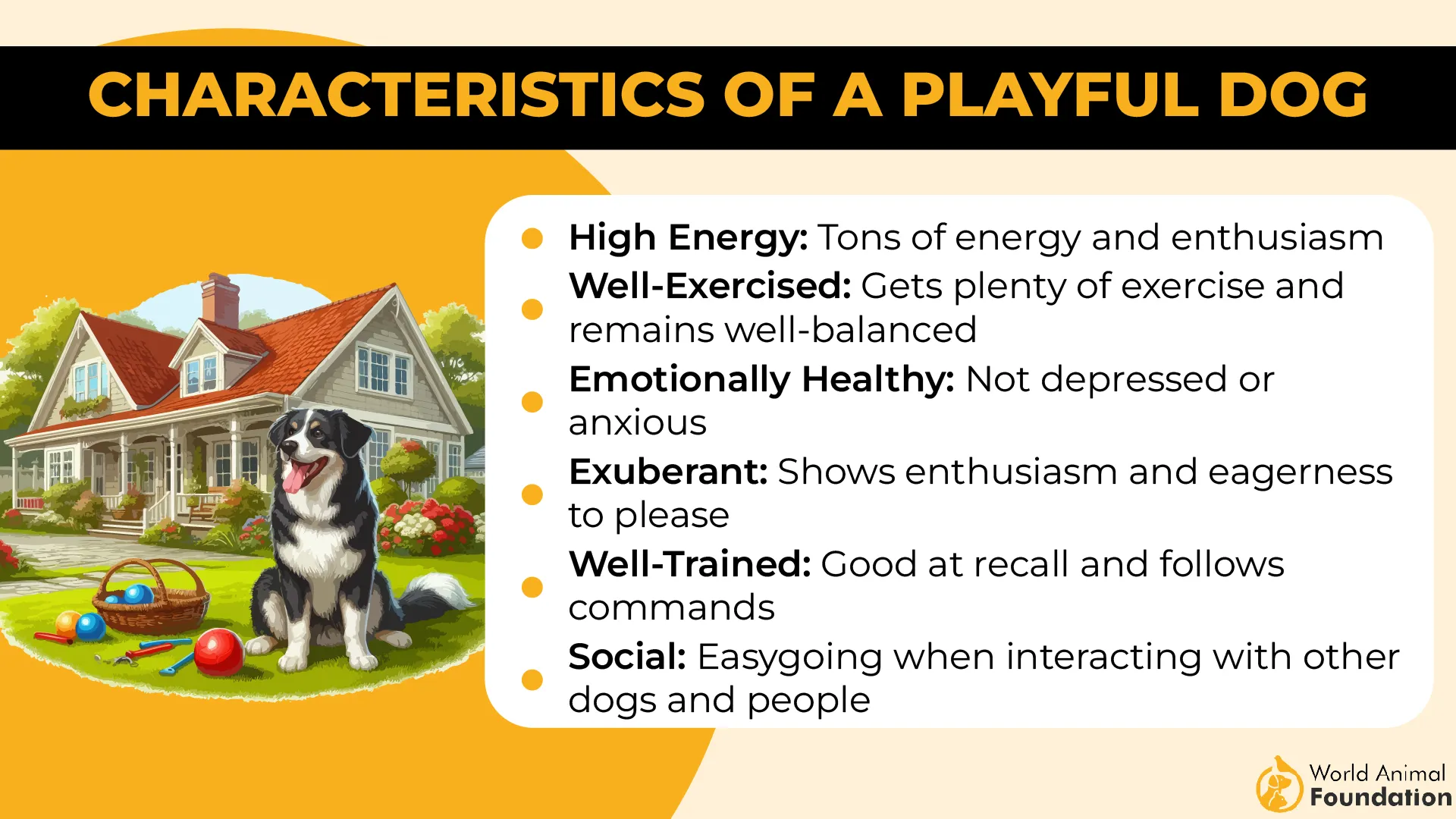
Quick fact: The world’s oldest Chihuahua on record lived to be 23. Twenty-three! That’s almost two decades of sass, snuggles, and dramatic side-eyes.
5. Dachshund
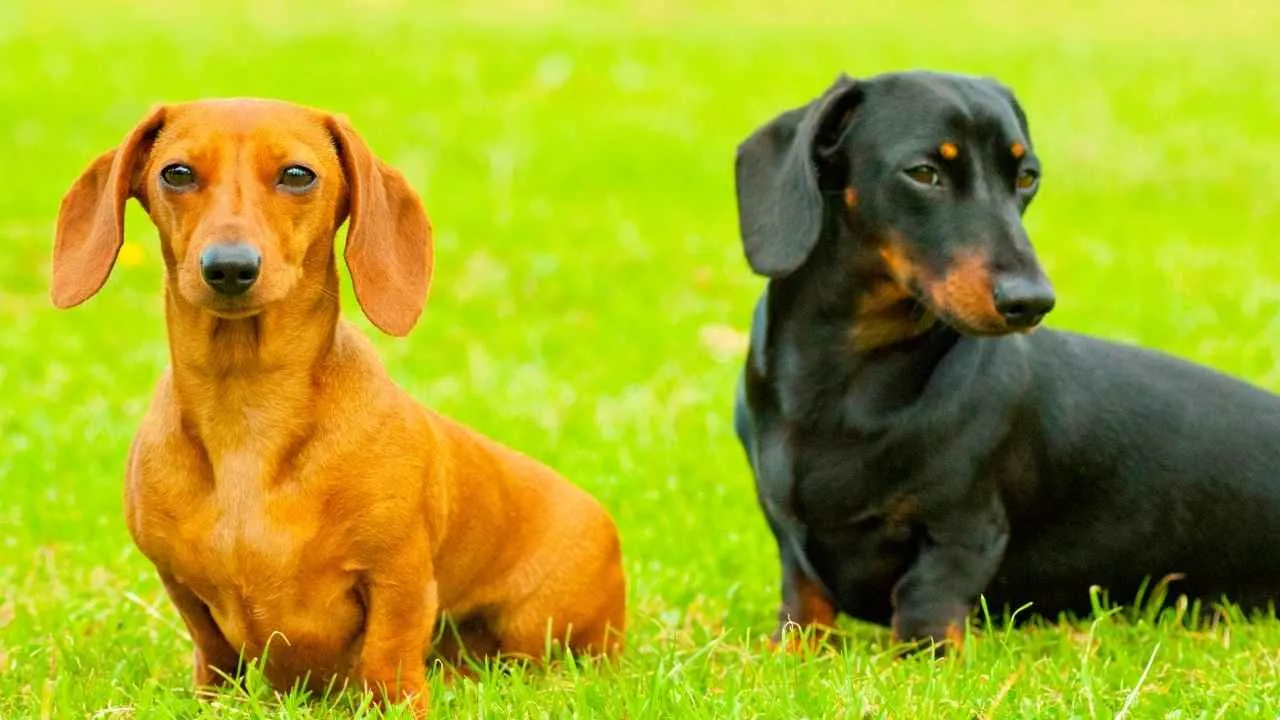
First glance? Cute little sausage on legs. Second glance? Pure determination in a tiny, oddly shaped body. The Dachshund may look like a novelty, but this breed is all business when it comes to stamina, intelligence, and staying power, in both personality and lifespan.
Developed to hunt badgers (yes, badgers!), these little dogs are born diggers with serious drive. That instinct hasn’t gone anywhere. Give a Doxie a scent trail, a toy to stalk, or even a blanket to burrow under, and they’re fully in their element. Couch potatoes? Not these guys.
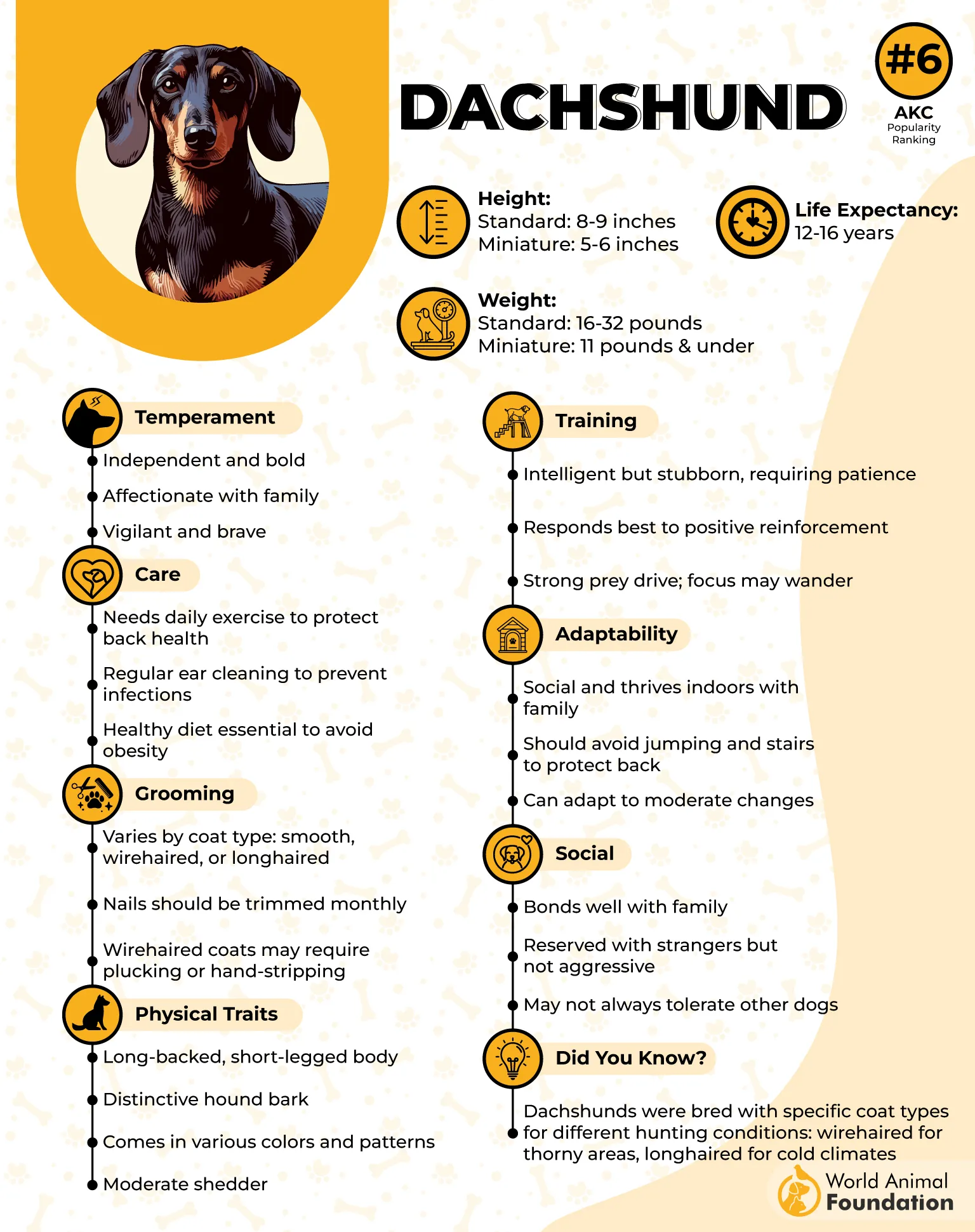
Despite their short legs, they’ve got stamina that surprises even seasoned dog owners. They can walk, hike, and play longer than many breeds twice their size—just don’t expect them to sprint. They’re marathoners, not sprinters, and they’re in it for the long haul.
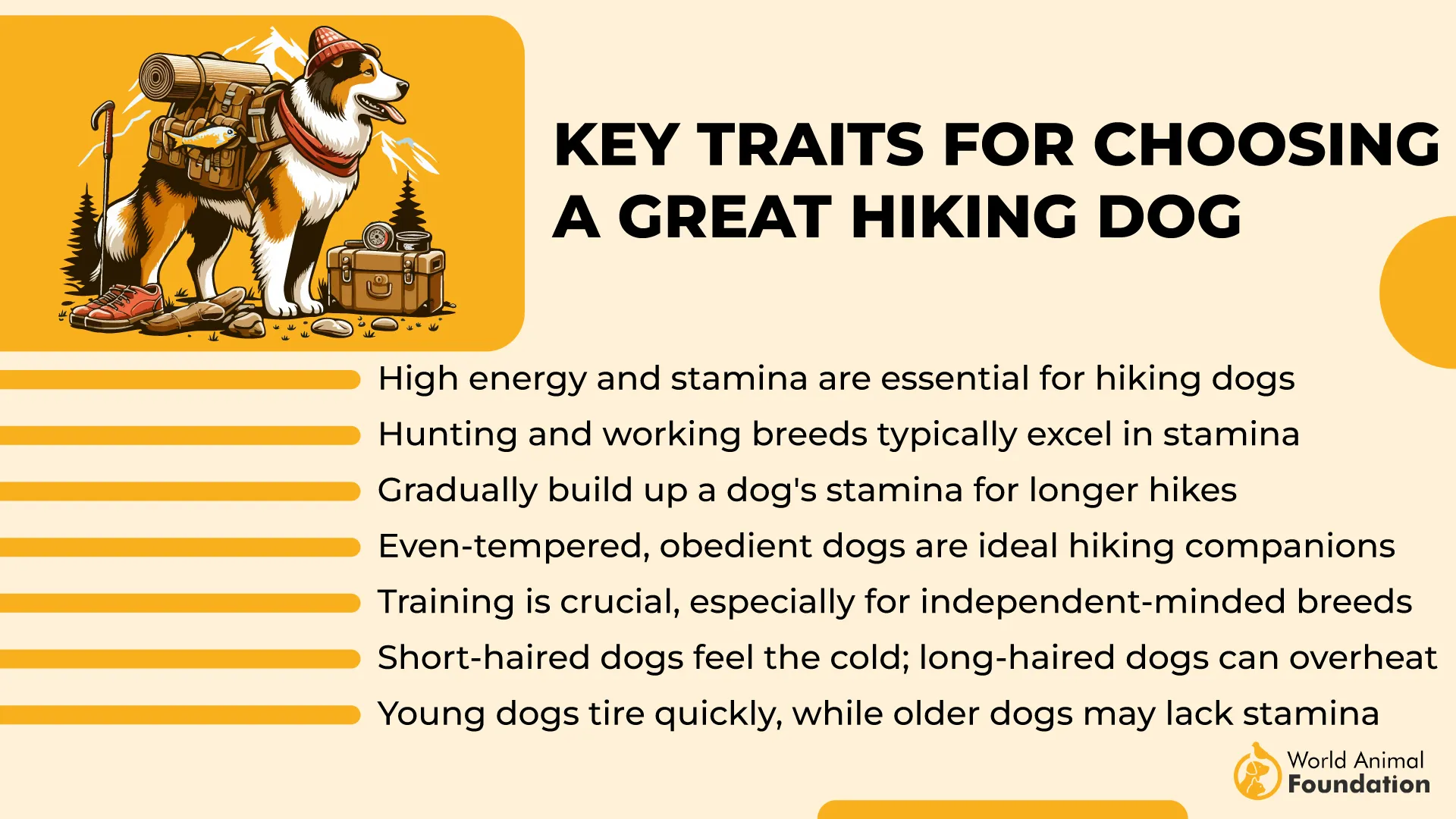
Their strong-willed nature makes them more fascinating. Training a Dachshund can feel like negotiating with a short, stubborn CEO. But once you earn their respect, you’ve got a loyal, clever little buddy who’ll impress you with just how much they understand, says Petplan.
Have kids or other pets? Dachshunds can be total hams, but they like things on their terms. Early socialization is key. They love games that tap into their hunting instincts, like scent-based puzzles or tracking toys—those little noses never quit.
Fun fact: The Dachshund was the first Olympic mascot dog—yep, the 1972 Munich Olympics had a cartoon Doxie named “Waldi” as their symbol. Athleticism, charisma, and a little weirdness? Checks out.
6. Havanese

If extroverts were dogs, the Havanese would be leading the party—probably in costume, probably dancing. These bouncy, bright-eyed pups are made for interaction. Whether it’s with people, pets, or strangers on the street, they’re happiest when someone’s paying attention.
While they’re often labeled as companion dogs, don’t confuse that with being lazy. Havanese love to move. Their favorite activities? Zoomies, obstacle courses, and following their humans around like adorable, fluffy shadows. Sitting still is a concept they don’t totally understand.
This breed hails from Cuba, where they were adored by aristocrats for being playful, loyal, and devoted. That sunny origin shows—Havanese tend to have an upbeat, almost silly vibe. They turn everything into a game, from walking on a leash to figuring out how to reach your snack on the table.

AKC states that they’re surprisingly athletic for their size. Agility? Nail it. Trick training? They’re down. And because they love to please, they make training feel like a bonding session more than a chore. If you’re the kind of person who talks to your dog like a best friend, this one will talk back—with tail wags and happy hops.
Their long lifespan—usually around 14 to 16 years—isn’t just luck. It’s tied to their active, engaged lifestyle. A mentally and physically stimulated Havanese ages more slowly, stays sharper, and brings that same puppy-like enthusiasm well into their senior years.
Quick fact: The Havanese is the only dog breed native to Cuba, and was once nearly extinct after the Cuban Revolution. Dedicated breeders helped bring them back, and now they’re thriving worldwide with their signature bounce and charm.
7. Miniature Pinscher
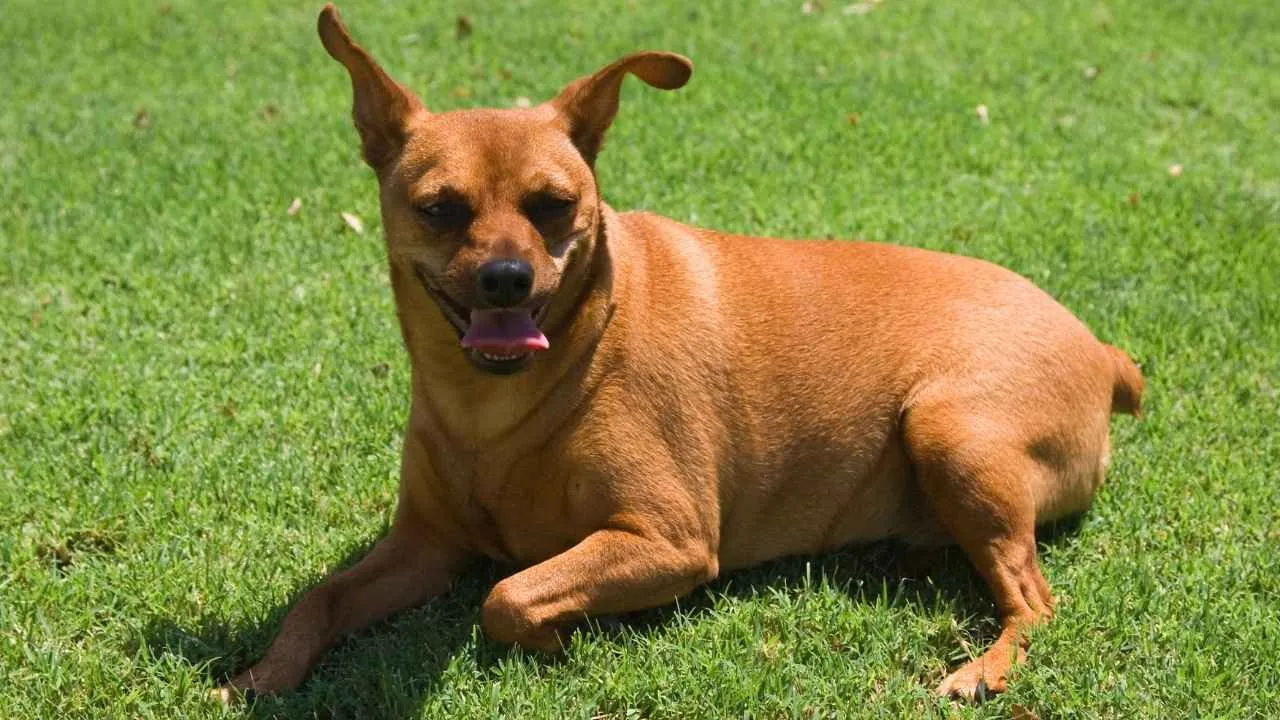
What makes Min Pins such high-octane companions is their endless need to move. These dogs are pure muscle and motion. Indoors or outside, they’re always on a mission—scouting the perimeter, chasing shadows, or investigating every crevice like it’s a top-secret job. Ever seen a tiny dog do laps around the coffee table for fun? You will.
Despite popular belief, they’re not just mini Dobermans. In fact, the Miniature Pinscher predates the Doberman and has a completely different origin story, rooted in German rat-hunting. Their agility, curiosity, and lightning-fast reflexes all trace back to that fearless, no-nonsense background.
Mental stimulation is everything for this breed. If you don’t give them something to do, they’ll find something themselves—and it may or may not involve chewing your phone charger. Short bursts of training, fetch games, and puzzle toys are a must to keep them sharp and out of trouble.
They’re surprisingly good at agility sports and rally obedience—if you can keep up. Their small size doesn’t slow them down at all, and their tight, springy movements make them naturals at darting through tunnels and flying over mini jumps. Who said toy breeds can’t be athletes?
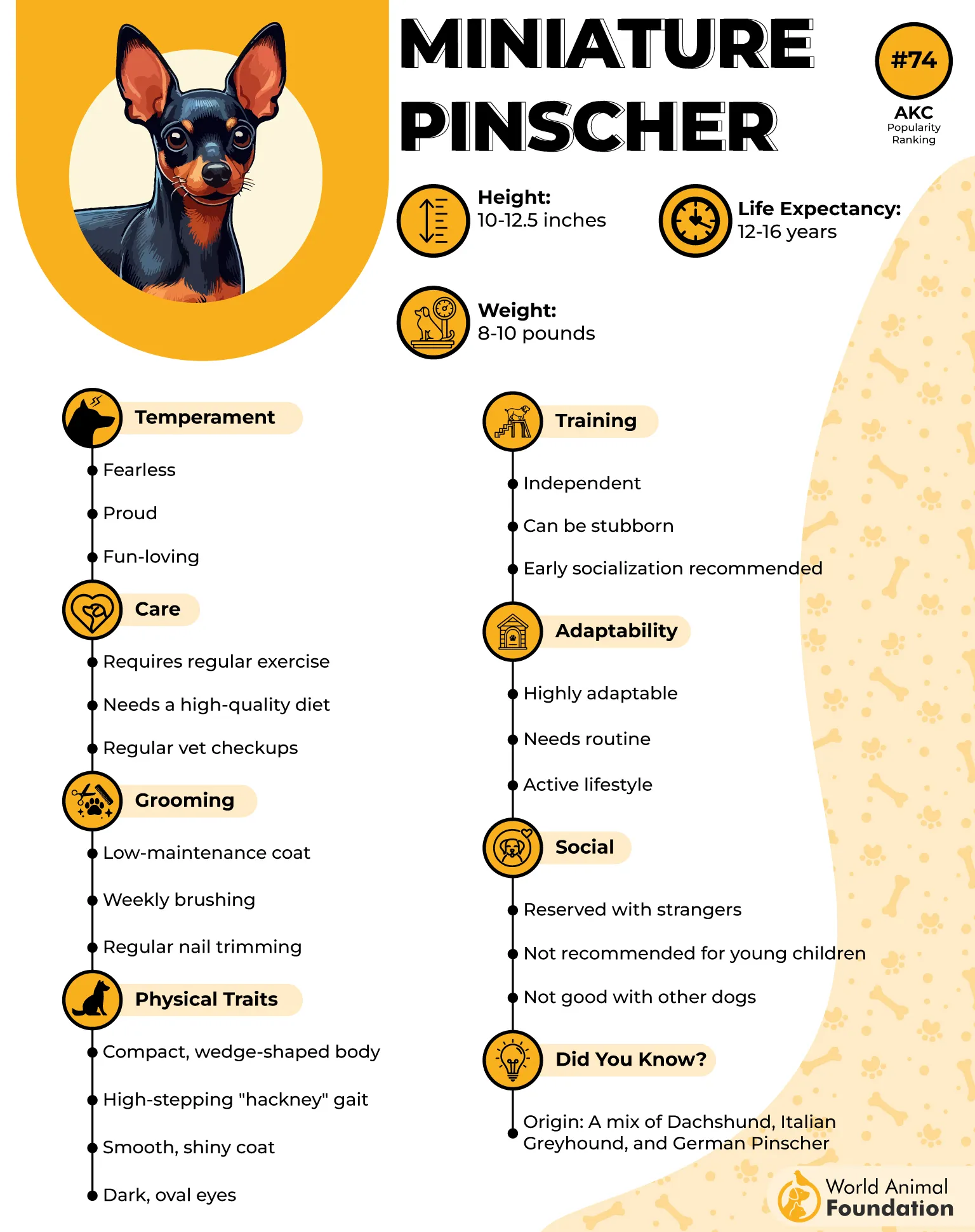
Min Pins are also incredibly alert, says Purina. They make fantastic watchdogs, though you may want to work on an “off” switch. With proper care, these energetic dynamos often live 14–16 years. That means more than a decade of zoomies, sass, and side-eye. Their lean build helps them stay active longer, but their sharp minds play a huge role in that longevity, too.
Fun fact: The Miniature Pinscher’s iconic “hackney gait”—that high-stepping trot—comes from selective breeding and gives them their signature confident swagger. They don’t walk… they parade.
Conclusion
If you’re searching for active, tiny dog breeds with a long lifespan, look no further—some of the smallest dog breeds in the world pack a punch when it comes to energy, charm, and longevity. From the sprightly Jack Russell Terriers to the elegant Italian Greyhounds, these tiny dogs are not only the longest living dog breeds but also make great family pets. Their big personality and fun-loving nature make them ideal for pet parents who want a great companion with plenty of spunk.
Many of these dogs, like the Toy Poodles, Yorkshire Terriers, and Shih Tzus, regularly live past the average lifespan and into their late teens—some even claiming spots in the Guinness World Record books for their impressive long lives. These small breeds, including the Cavalier King Charles Spaniel, Miniature Schnauzer, and Chinese Crested Dogs, are known for being affectionate dogs, extremely loyal, and often easily trained. They’re also generally good-natured and great watchdogs—especially the Toy Manchester Terrier, which was originally bred to catch rats but has since become a devoted breed and loving lap dog.
Their coat types vary widely, from the silky coat of a Yorkie to the thick double coat of some wire-haired or short-haired breeds. Despite their short legs, these fluff balls love regular exercise, even if it’s just a brisk walk around the neighborhood. And while they require regular grooming to maintain a healthy weight and avoid dental disease or progressive retinal atrophy, their needs are relatively easy to manage for attentive owners. In the end, dogs tend to thrive when they’re loved, exercised, and kept in good health, proving that when it comes to tiny dog breeds, life really is better in small doses—with lots of heart and an impressively long life expectancy.


